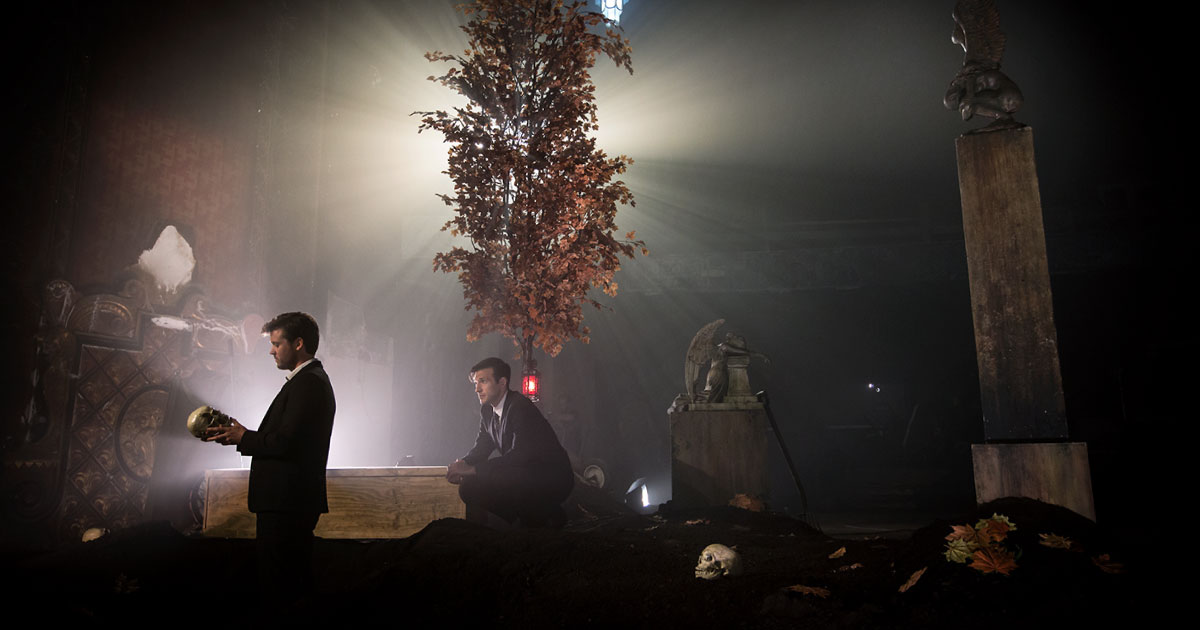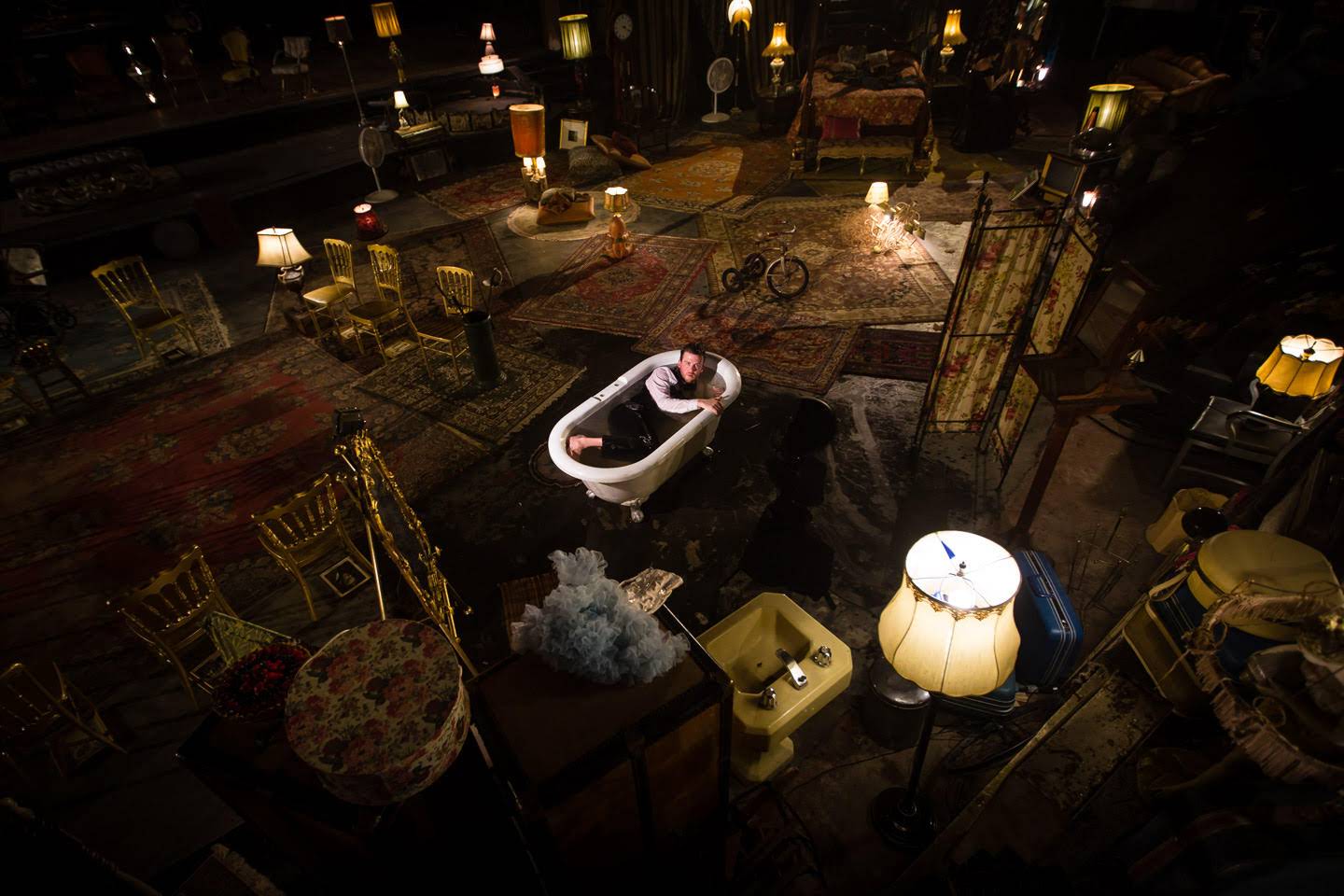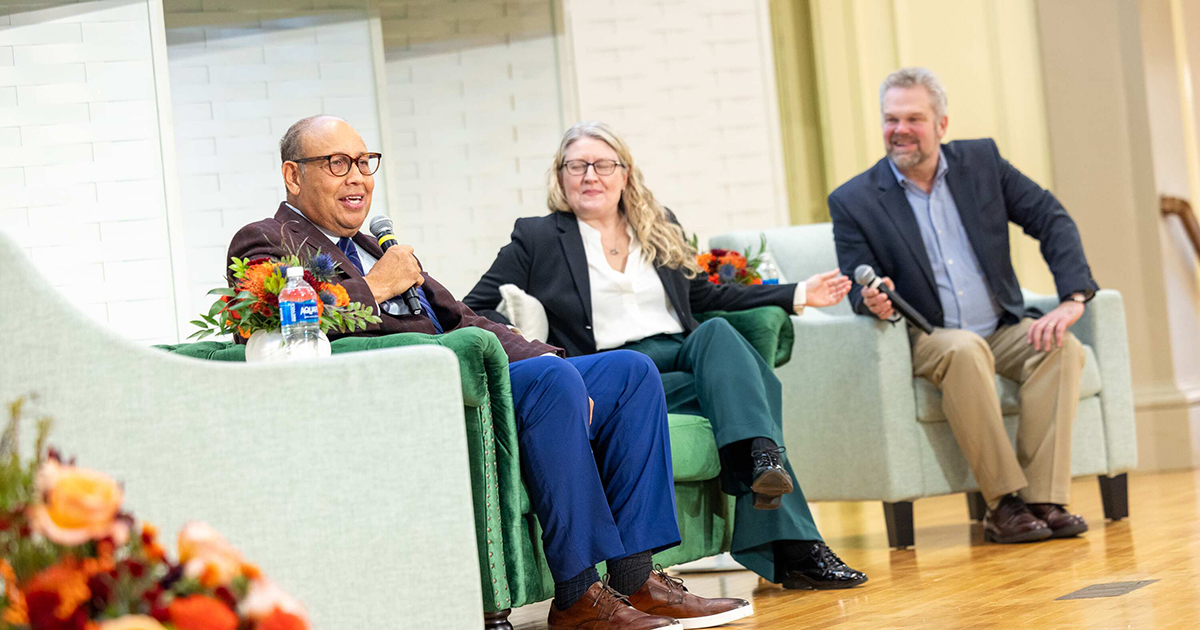To Be or Not to Be—Now in Virtual Reality

Shakespeare is timeless. His works are also amazingly adaptable.
Just think of the diverse films that have taken their inspiration from Romeo and Juliet through the years. Picture Leonardo DiCaprio and the gun-toting gangs of Romeo + Juliet, or the Jets and Sharks facing off in the classic West Side Story, or even the garden gnomes falling in love in the animated Gnomeo & Juliet.
For Steven Maler of Commonwealth Shakespeare Company, the theater in residence at Babson College, Shakespeare still speaks to modern audiences. Whatever form a production may take, the words remain filled with beauty, truth, and relevance.
“We think these plays are very much alive even though they were written 400 years ago,” says Maler, the company’s founding artistic director. “The narratives are as powerful now as they were then.”
For all the many, many adaptations done of Shakespeare plays, however, Maler can lay claim to trying something that is undeniably unique. Taking the Bard’s greatest play, Hamlet, Maler has adapted and directed a film version in the emerging technology of virtual reality (VR). “This has never been done before,” says Maler. “This has been one of the most challenging and mind-bending projects I have ever worked on.”
The Best Seat
Maler’s film, Hamlet 360: Thy Father’s Spirit, can be found at the site of Boston public media outlet WGBH. The film is available free of charge and in many ways serves as an extension of the mission of the Commonwealth Shakespeare Company, which every summer puts on free Shakespeare performances on the Boston Common.
Too often, Maler says, Shakespeare is seen as inaccessible and only meant for the culturally elite. His company refutes that. Since its inception in 1996, more than 1 million people have attended its popular summertime performances. “Our approach is these plays belong to everyone,” Maler says. “Shakespeare wrote them for everybody.”
The roots of the Hamlet project began with a conversation at Google. Over the years, Maler has done consulting work with the tech giant, and while talking with Google’s head of VR and augmented reality, Maler made a suggestion. “Wouldn’t it be great to take this technology,” he said, “and scale our mission to the world?”
Google agreed and collaborated with Maler on the film, which places viewers in the middle of the play’s intrigue and tragedy. The action and even the sound of Maler’s Hamlet occur in 360 degrees, the equivalent of being a football fan and having a seat on the field.
“It gives everyone the best seat,” Maler says. “Virtual reality is immersive by its nature. You put the camera in the middle of the action. You, the viewer, are surrounded.”
Filming in 360 Degrees
Adapting Hamlet for VR, however, posed challenges. For starters, there was the play’s length. At three and a half hours, it’s much too long for a VR film. So Maler trimmed it down to an hour, cutting out characters and scenes until the relationship between Hamlet and his dead father became the focal point.
Even with all the editing, the play is still one of the longest VR narratives ever filmed. “It’s very ambitious in that regard,” says Maler. Every word spoken also remains that of Shakespeare.
Another challenge was the actual filming. In a typical film production, the cast performs on one side of the camera, and the crew watches on the other side with all their monitors and lighting. But a VR camera films in 360 degrees, so no crew or equipment can be in sight. “You press go on the camera, and everyone runs and hides,” Maler says. “We would literally hide behind furniture.”
A typical movie or TV show also has lots of edits. The action quickly and seamlessly cuts from one camera to another to another. But cuts in VR can be disorienting, so Hamlet 360 utilizes lots of long takes. The camera may film for five or seven minutes at a time, and everything must go perfectly during that take.
Actors hired for the project hence had to be comfortable doing scenes in their entirety, a skill much more associated with the stage than the screen. “You have to not mess up for the entire take or it’s ruined,” says Maler. “That’s an interesting challenge.”
Bathtub Soliloquy
While preliminary rehearsals for the project took place at Babson’s Knight Auditorium, the filming occurred over five days in New York City, at an abandoned vaudeville theater on Staten Island.
In an exhaustive undertaking, the space was transformed into a surreal, dreamy landscape, one meant to evoke the memories and inner life of the play’s tortured titular character. Clint Ramos, the film’s Tony Award-winning designer, filled the hall with a car, rocking horse, tricycle, bed, water tank, and a jumble of other items.
Eleven tons of dirt were trucked in for a cemetery scene, and Hamlet, played by Jack Cutmore-Scott (the star of ABC-TV’s “Deception”), delivers the famous “To Be or Not to Be” soliloquy from a bathtub.
Maler calls the set design a “massive collage.” “It’s all these fragments of Hamlet’s life,” he says. “Everywhere you look is this incredible texture and detail.”
 Photo: Matthew Niederhauser
Photo: Matthew Niederhauser
A Powerful Medium
From beginning to end, Hamlet 360: Thy Father’s Spirit was about two years in the making. Maler calls VR a “new medium that’s neither film nor theater,” and that’s evident in the final movie, which feels like a cross between the intimacy of film and the grandeur of the stage.
Maler says that most new smartphones will be able to screen the movie with the aid of a VR headset. The film also can be screened on a desktop or laptop computer, though the viewing experience won’t be ideal, as the image will be flattened out.
Maler hopes the Hamlet project opens up new possibilities for VR. Up till this point, he says, VR has been often used for gaming or for filming immersive experiences, such as someone flying in the air or swimming with sharks. “We’re going beyond that,” he says. “We’re excited about pushing the boundaries of virtual reality to make it a more powerful narrative medium.”
Looking to the future, Maler sees VR occupying a “provocative intersection” between creativity, technology, and entrepreneurship. VR represents a new way to look at and make sense of the world, and its potential is vast. “There are massive business opportunities as this medium develops and evolves,” says Maler.
Featured photo by Matthew Niederhauser.
Posted in Community





